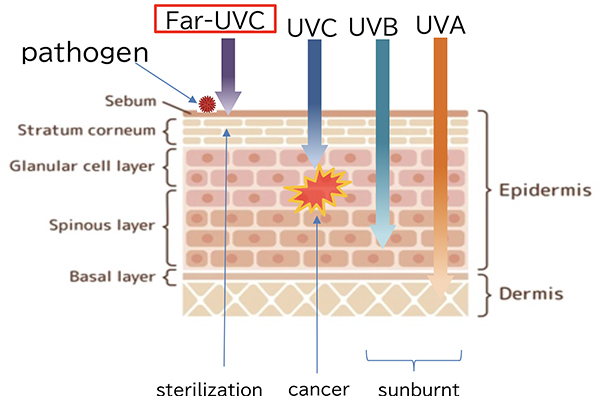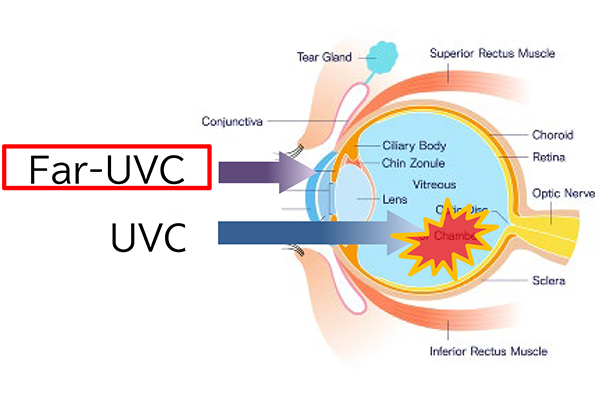TECHNOLOGY
Far-UVC LED
LED and UV light
LED is a semiconductor device that directly converts the energy of electrons into light. LEDs have features such as small size, light weight, high efficiency, and long life, and are being replaced with conventional light sources in various fields.
Ultraviolet light is invisible to the human eye and has a shorter wavelength than visible light. This ultraviolet light is classified by wavelength as UVA, UVB, and UVC, and each has its own unique applications.

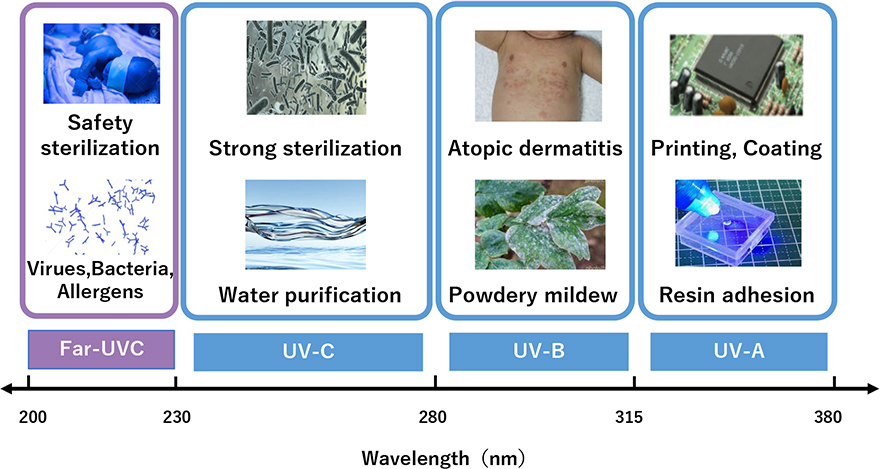
In particular, UVC with a wavelength of 200 - 280 nm is completely absorbed by the ozone layer, making it a special type of light that does not normally exist on earth. This special light has excellent sterilizing effects by damaging the DNA of living organisms. UVC enables clean sterilization and water purification without the risks associated with the use of chemical residue or the emergence of drug-resistant bacteria. In addition, our group conducted research on the inactivation mechanism of the new coronavirus(SARS-CoV-2)by ultraviolet light irradiation, and was the first in the world to reveal that the inactivation of coronavirus is caused by damage to viral RNA. I did[1].
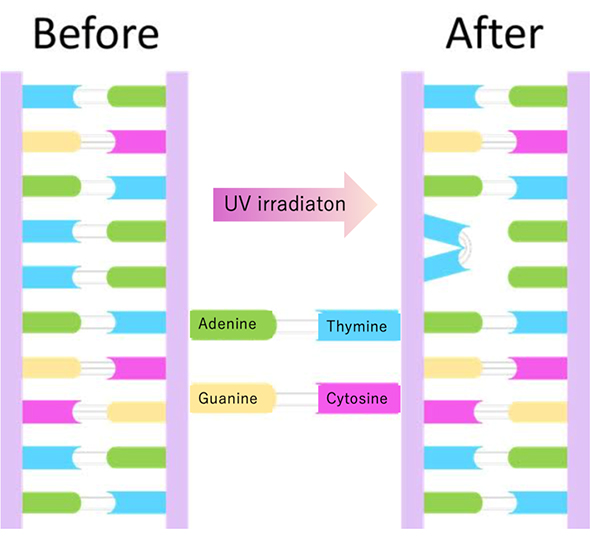
Far-UVC refers to special light with a shorter wavelength of 200 - 230 nm within UVC. Far-UVC is an extremely useful light that has excellent sterilizing effects and is also reported to be highly safe for the human body.
Disinfection technology using Far-UVC LED
Conventinlally used UVC is highly aggressive to living organisms, so it was intended to be used in unmanned environments. on the other hand, Far-UVC is highly safe for humans[2][3], and its use in manned environments is also being discussed.
Generally, the shorter the wavelength of light, the more easily it is absorbed by a material, and the length of light that penetrates into the material. Far-UVC, which is rasily absorbed by proteins, is absorbed by the stratum corneum, which is made up of dead cells, and therefore does not reach living cells. Therefore, it is attracting as a new technology that enables surface sterilization without affecting the human body.
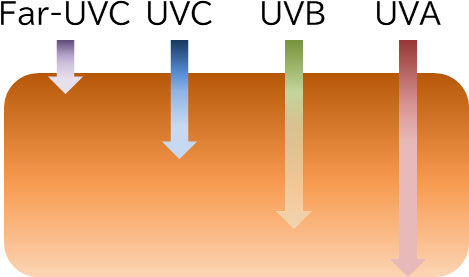
The body surface that is in direct contact with the outside world is the body’s first line of defense. In the human body, the stratum corneum functions as a strong physical barrier. Living organisms other than humans also have a barrier layer for biological defense.
For example, plants build a non-cellular lipid membrane called the cuticle, and fish build a mucus layer by secreting mucus on their body surfaces. Far-UVC, which has a short wavelength, has a large absorption in these barrier layers, which reduces the amount of light that enters the inside of the living body. Therefore, it is expected to be safer for living organisms than conventional UVC.
Far-UVC has both sterilizing and inactivating effects on microscopic bacteria and viruses and safety on macroscopic organisms, and is expected to be used in a variety of fields. Far-UVC has great potential to provide clean solutions to various problems related to ecosystems, such as sterilization in human environments, disease prevention in agricultural crops and farmed fish, and inactivation of allergens.
References
[1] Mechanism of inactivation of new coronavirus by ultraviolet irratiation
[2] “Long-term Effects of 222-nm ultraviolet radiation C Sterilizing Lamps on Mice Susceptible to Ultraviolet Radiation”,Photochemistry and Photobiology, 2020, 96 853
[3] “Exploratory clinical trial on the safety and bactericidal effect of 222-nm ultraviolet C irradiation in healthy humans”, PLoS ONE 15(8): e0235948 (2020).
World-class crystal growth technology
RIKEN has become the first in the world to achieve a light output of 1 mW in the technically difficult Far-UVC region.[1]。
It is known that the efficiency of LEDs decreases exponentially as the emission wavelength becomes shorter[2]. In particular, the efficiency in the Far-UVC region, where the wavelength is 230 nm or less, is low, making it extremely difficult to achieve the 1 mW class optical output required for practical use. We aim to provide clean solutions using new light through the social implementation of RIKEN’s Far-UVC LED technology, which was the first in the world to achieve a light output of 1 mW.
[1] “Milliwatt-power far-UVC AlGaN LEDs on sapphire substrates”, Appl. Phys. Lett. 120, 211105 (2022)
[2] External Quantum Efficiency of UV-LEDs (2022)


